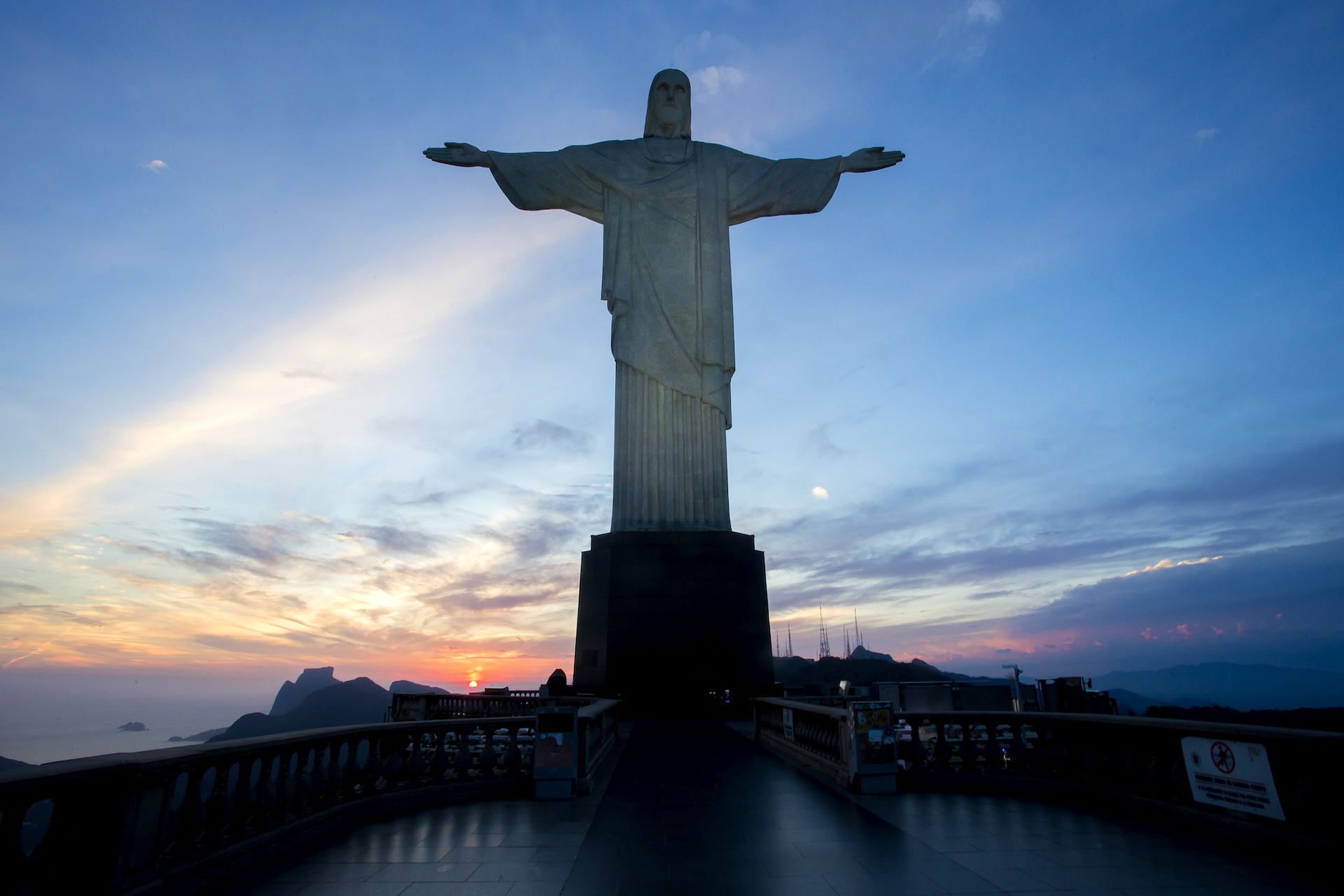Rio de Janeiro - RJ
Basic information
Population: 16,055,174 of people
GDP per capita: BRL 49.094,40
Human Development Index (IDHM): 0.762
Source: IBGE
Rio de Janeiro is the capital of the state of Rio de Janeiro, in the southeastern region of Brazil. Those born in the state are Fluminenses. Those born in the city are Cariocas. Rio de Janeiro, the cradle of Brazilian history, is a cultural and tourist icon. With its natural and cultural exuberance, it stands out as a global hub. The city will host the G20 Leaders' Summit, a group that brings together the world's main economies, in November 2024.

Presentation
The city of Rio de Janeiro has a territorial area of 1,200.329 km2. It is known worldwide as the Marvelous City. Rio transcends its stunning geography to reveal a rich history, dynamic economy, vibrant culture, unique cuisine and great importance for tourism.
The history of Rio de Janeiro is intertwined with the very formation of Brazil. Founded by the Portuguese in 1565, the city was the stage for key moments in Brazilian history, from the Colonial Period to the Proclamation of the Republic. The people of Rio are the result of the miscegenation of indigenous, Portuguese and African peoples. This fusion of cultures has shaped the identity that defines the capital.
Rio de Janeiro's economy is diversified. As a financial and commercial center, it is home to national and international companies. The city stands out as a cultural and entertainment hub, with events such as Carnival and New Year's Eve attracting millions of visitors. Monuments such as Cristo Redentor (Christ the Redeemer), who watches over the capital from the top of Corcovado, and Pão de Açúcar, are symbols of a unique history.
In addition to its natural beauty, Rio de Janeiro has a vibrant cultural scene, where museums, theaters, art galleries and cultural spaces flourish. Among the highlights are the Museu da Arte Moderna - Modern Art Museum (MAM), the National Museum of Fine Arts and the Municipal Theater.
Carioca culture is a mixture of rhythms, colors and celebrations. From samba to funk, including the samba school parade on Carnival, the city breathes music and dance. Street art, expressed in murals and graffiti, is a form of authenticity that colors the metropolis.
The cuisine of Rio de Janeiro is a unique sensory experience. From feijoada, Brazil's national dish, to beach delicacies such as bolinho de bacalhau and tapioca, the gastronomic diversity reflects cultural miscegenation. In traditional neighborhoods such as Santa Teresa, restaurants offer everything from typical dishes to contemporary innovations.
Rio de Janeiro attracts visitors from all over the world. Its iconic beaches, such as Copacabana and Ipanema, are postcard settings. The capital of Rio de Janeiro is more than a city, it's a state of mind, a celebration of diversity and a source of inspiration. This rich history makes Rio a Brazilian treasure, where natural beauty meets cultural exuberance, forming a mosaic that captivates and enchants the world.
Main tourist attractions
• Cristo Redentor - Christ the Redeemer
• Pão de Açúcar
• Copacabana and Ipanema beaches
• Botanical Garden
• Maracanã
• Selarón Staircase
• Rodrigo de Freitas Lagoon
• Museu de Arte Moderna (Museum of Modern Art)
• Parque Lage
24 HOURS IN RIO DE JANEIRO
MORNING
Climb to the top of Corcovado Hill to see the iconic statue of Cristo Redentor, as well as remarkable views of the city. By taking the cable car to the top of Pão de Açúcar, you can enjoy panoramic views of Guanabara Bay and the Rio de Janeiro skyline.
LUNCH
Rio de Janeiro embraces all the country's culinary traditions, becoming a gastronomic melting pot. In addition to feijoada, unanimously recognized as a national symbol, you can enjoy the emblematic savory Globo cookie, refreshing mate and the traditional Oswaldo Aranha steak.
AFTERNOON
A tour of Pequena África is a fascinating opportunity to explore Afro-Brazilian history and culture. Located in the port region, this area played a central role in Brazil's history, especially during colonial times and the slave trade era. By visiting these significant sites, visitors can learn more about the rich African heritage that continues to influence the city's cultural identity.
LATE AFTERNOON
With the 4th most beautiful sunset in the world, Rio displays this natural spectacle on a daily basis. Pedra do Arpoador, in Ipanema, is one of the best places to experience this magic! Directly from the stone, you can see the sunset and the Dois Irmãos hill making up a scene worthy of applause.
NIGHT
Rio's nights are as captivating as its days. In bohemian neighborhoods such as Santa Teresa and Lapa, you can find lively restaurants and bars, concert halls with live music and parties that last until dawn. The rhythms of Carioca samba and funk in iconic venues are on the nightly program, which makes for great entertainment in the city's effervescent atmosphere.
Airport
Santos Dumont Airport stands out in the heart of Rio de Janeiro, privileged for its central location and offering domestic flights. Tom Jobim/Galeão International Airport is a global gateway, connecting Rio to the world, with extensive infrastructure and international and national flights. Both are essential parts of air connectivity and vital for the city's tourist flow.
Sites
Rio de Janeiro City Hall
Government of the State of Rio de Janeiro
https://visitrio.com.br/turismo-no-rio-de-janeiro/
G20 events in Rio de Janeiro
Click here to see the full calendar